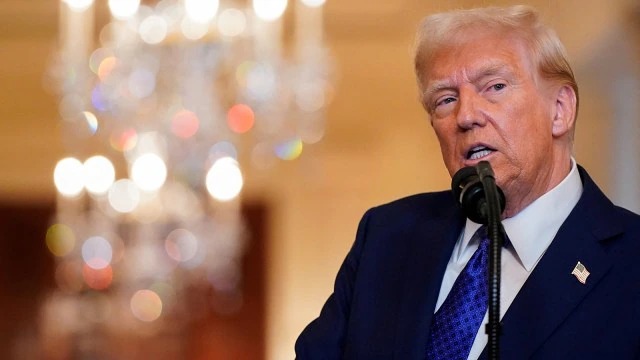
Introduction
The US-India trade relationship has been increasingly strained due to Donald Trump’s tariff threats, particularly in the pharmaceutical and consumer goods sectors. India has benefited from a trade surplus with the United States, but this advantageous position could be under threat if the former US president’s tariff policies resurface, potentially disrupting key Indian industries. India’s dependence on American trade policy, especially for generating US dollar earnings, puts the country in a precarious position as it navigates the complexities of trade negotiations.
Trump’s Tariff Threats and Impact on India’s Pharma Sector
The pharmaceutical sector is one of the most vulnerable industries in India when it comes to changes in US tariff regulations. India is a major supplier of generic medicines to the US, accounting for a significant portion of the country’s pharmaceutical imports. However, should tariffs on Indian pharmaceutical products increase, the cost of generic drugs in the US could rise, affecting India’s exports. This would be detrimental not only to India’s pharma industry but also to US consumers, who rely on affordable medicines.
In the past, India’s pharma industry has been a strong performer in terms of trade with the US, with the sector contributing heavily to India’s export earnings. Indian pharma companies such as Sun Pharma, Cipla, and Dr. Reddy’s are key players in the US market. They provide affordable alternatives to brand-name medications, offering crucial savings for US consumers. If tariff hikes were to occur, it could lead to higher prices for consumers in the US, causing a ripple effect across both the US and Indian economies.
Additionally, the manufacturing costs for Indian pharma companies may increase if tariffs on raw materials or intermediate goods rise. This would affect the profitability of Indian pharmaceutical firms and hinder their ability to maintain competitive pricing in global markets.
Impact on India’s Consumer Goods Sector
The consumer goods sector is another area where India could feel the heat from potential US tariffs. India exports a wide range of consumer goods, including textiles, garments, electronics, and food products. The US market is one of the largest destinations for these goods, and any increase in tariffs could make Indian products more expensive for US consumers. This price increase could lead to a decline in demand, particularly in sectors such as textiles and electronics, which rely heavily on US exports.
In addition, Indian consumer goods companies would face stiff competition from other low-cost producers, particularly from China and Southeast Asian countries, which could benefit from lower tariff rates or trade agreements that India does not have access to. This increased competition would make it more difficult for Indian firms to maintain their market share in the US, potentially leading to a decline in overall export revenues.
India’s Reliance on US Trade Policy
India’s trade surplus with the US is largely based on its exports to the US, particularly in sectors like pharmaceuticals, textiles, and consumer goods. A significant portion of India’s foreign exchange earnings comes from the export of these goods, and the US remains one of India’s largest trade partners. As such, India is highly sensitive to changes in US trade policy, especially when it comes to tariffs.
India’s reliance on the US dollar also plays a role in its exposure to potential tariff changes. The US dollar is the global reserve currency, and India’s dollar-denominated earnings from exports form a substantial part of the country’s foreign exchange reserves. Any disruption in this trade could lead to fluctuations in the Indian rupee and affect the country’s foreign exchange reserves, which could create challenges in managing its external debt and balancing its current account.
The Trade Surplus and Its Importance to India
India has maintained a trade surplus with the United States for several years, largely due to strong exports in sectors such as pharmaceuticals, textiles, and information technology services. This surplus is an essential part of India’s economic growth, as it contributes significantly to the country’s foreign exchange reserves and helps to maintain the value of the rupee against other major currencies.
However, should the US decide to impose tariffs on key Indian exports, this surplus could be at risk. This would reduce the flow of US dollars into India’s economy and potentially lead to a widening current account deficit. Additionally, the depreciation of the rupee could make India’s imports more expensive, which could negatively affect the cost of living and inflation levels in the country.
Challenges and Solutions for India
As Donald Trump’s tariff threats loom, India must navigate the challenges posed by potential changes in US trade policy. One potential solution is to diversify India’s export markets, reducing its reliance on the US and expanding trade relationships with other countries. India’s growing ties with Europe, Southeast Asia, and Africa could provide alternative sources of demand for Indian products.
Additionally, India could explore regional trade agreements, such as the Regional Comprehensive Economic Partnership (RCEP), to open new markets for Indian goods. By focusing on innovation-driven growth and improving the competitiveness of its industries, India can mitigate the impact of any potential tariff hikes and continue to grow its export sector.
Conclusion
India’s trade surplus with the US has been a vital component of its economic prosperity, particularly in sectors like pharmaceuticals and consumer goods. However, Donald Trump’s tariff threats could put this relationship in jeopardy, impacting key industries and India’s overall economic stability. As India relies heavily on US trade policy and US dollar earnings, the country must prepare for the potential effects of increased tariffs. To safeguard its economic interests, India will need to diversify its export markets and pursue innovative solutions to stay competitive in the global economy.





